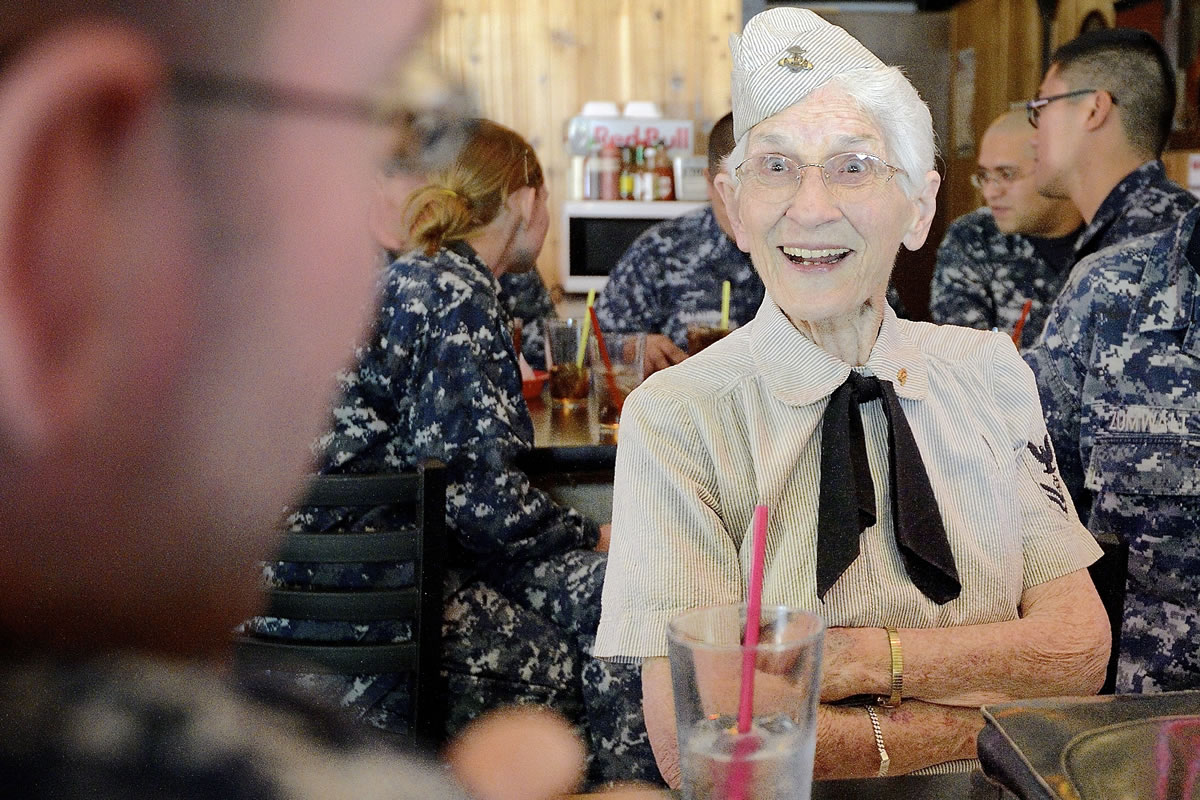A video can be found at bottom of story.
Almost 280,000 women were among the 12 million service personnel in America’s armed forces at the end of World War II. About 350,000 women served in the U.S. military during the war.
Evelyn Argo was never going to fire at the enemy during World War II, but she still played a vital role in that process. She trained a lot of the men who did the shooting.
Argo was part of the initial class of women who became U.S. Navy aviation gunnery instructors.
She was known as Evelyn Betschard back then, working at the Meier & Frank store in Portland when America went to war.
“I asked myself, ‘How is this helping us win the war?’ I didn’t want to work in the shipyard, so I joined the Navy,” the Vancouver woman said.
“It was scary,” the 90-year-old Argo said.
Her family had left Kansas — “With tornadoes, dust storms and the Depression, my family saw enough of Kansas” — but she still described herself as a green farm girl who hadn’t seen much of the world.
She found a spot in a Navy Reserve program — Women Accepted for Volunteer Emergency Service, or WAVES — designed to put more Americans in uniform.
Argo’s initiative and patriotism were saluted Monday by a new generation of U.S. Navy personnel. Sixteen sailors gathered to share stories over lunch at Tip Top Too Tavern. Their digital camouflage uniforms were quite a contrast to Argo’s
original seersucker WAVES uniform.
Senior Chief Petty Officer David Jaynes said he’d heard about Argo and wanted his sailors to meet her.
“This is an opportunity for our younger sailors to understand where they came from,” said Jaynes. “A lot of times, people take it for granted that things back in the day were the way they are now.”
The sailors’ ship, the USS Frank Cable, is a submarine tender undergoing maintenance at Swan Island in Portland. With their ship in dry dock, by the way, Jaynes and his sailors are temporary Vancouver residents.
Three of the sailors were women.
“It’s really cool, meeting somebody who was one of the first,” said Sara Zumwalt, electrician’s mate. (That’s a notable name in the Navy; her grandfather’s first cousin was chief of naval operations in the early 1970s and a new class of destroyers bears the family name.)
Zumwalt also thought it was pretty cool that Argo taught Navy airmen how to shoot. The WAVES’ students were fighter pilots and crewmen on torpedo planes and bombers.
“We were the last class they had to go through before they got their wings,” she said. “We started with pistols and went up to .50 caliber machine guns.”
According to a newspaper clipping in Argo’s scrapbook, the WAVES did instruction on firing ranges, taught gunnery theory in classrooms and developed accuracy on special training equipment.
But learning how to shoot was just part of it, Argo said. They also had to learn what to shoot.




